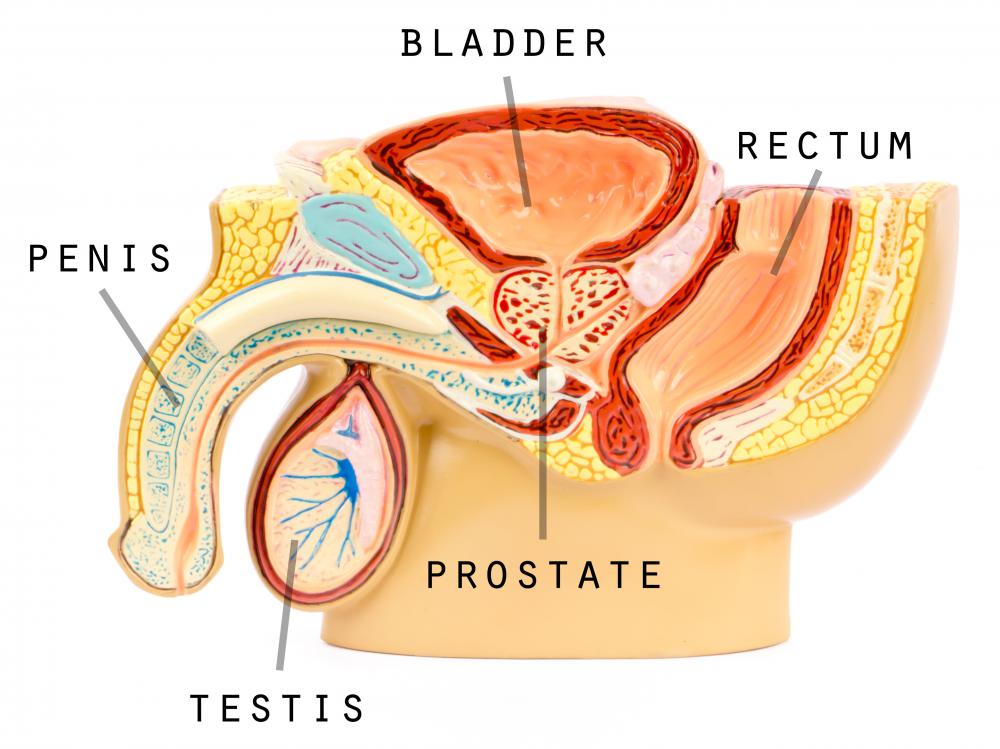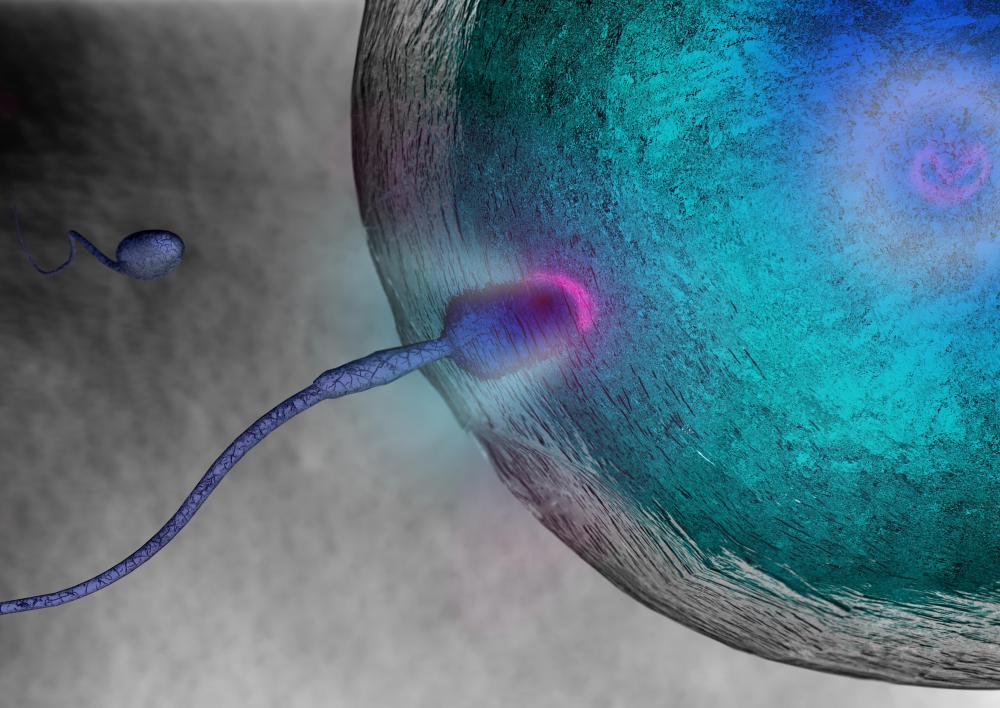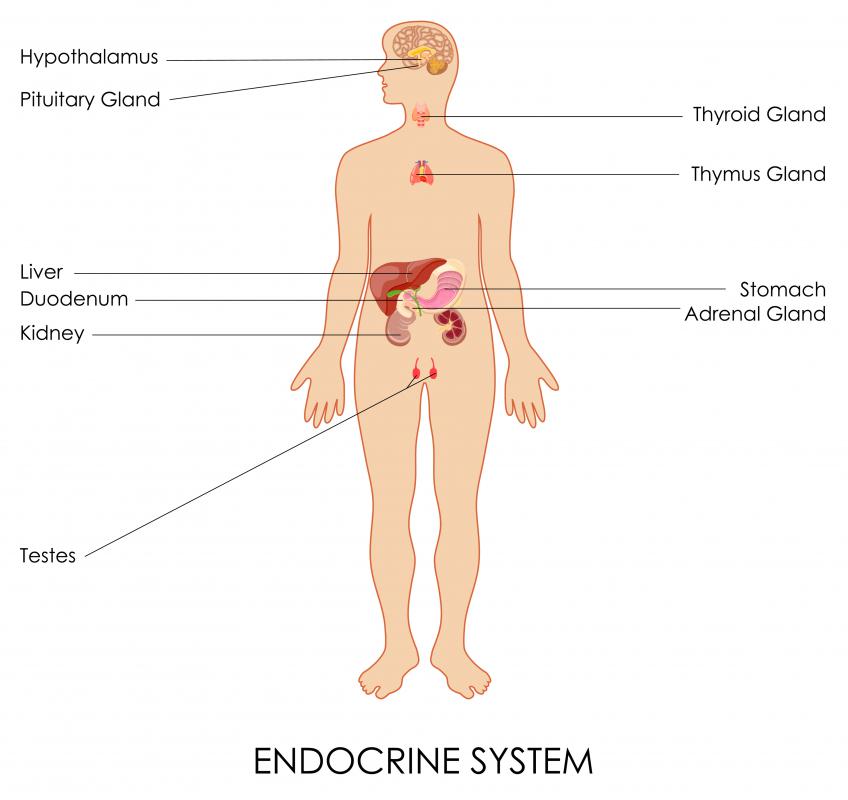At TheHealthBoard, we're committed to delivering accurate, trustworthy information. Our expert-authored content is rigorously fact-checked and sourced from credible authorities. Discover how we uphold the highest standards in providing you with reliable knowledge.
What are Testes?
The testes, or testicles, are the primary male sexual and reproductive glands. The two ovular or rounded glands are located in the scrotum, a saclike structure below the abdomen. The testes are responsible for generating spermatozoa, or immature sperm. When a single mature sperm combines with the mature egg of a female during sexual intercourse, fertilization and development of a fetus results. Thus, sperm are fundamental to human reproduction.
The testes are more accurately classified as gonads, reproductive glands that produce a gamete. A gamete is a reproductive cell that contains a chromosome carrying genetic information in the form of deoxyribonucleic acid (DNA). When a sperm cell penetrates an egg, which is produced in the female gonads the ovaries, fertilization results. The fertilized egg will determine the genes and traits of the offspring. The gender of the offspring depends on the type of chromosome carried by the sperm cell. Sperm cells are the smallest found in human bodies, and the egg is the largest.

The testes are surrounded by a structure called the epididymis, which collects and stores sperm produced in the testes. Sperm take approximately two months to mature. From the epididymis, sperm will travel via a series of anatomical tubes to the urethra where, upon ejaculation, they begins their journey to the egg. As the sperm travel through this series of ducts, they join with other components of semen — mucus, proteins and enzymes — to nourish and protect the sperm after they are inside the female vagina.

While the testes are — from the standpoint of spermatozoa production — reproductive glands, they also are an important part of the endocrine system. The endocrine system produces the body’s hormones, chemical messengers that are vital for the proper function of the body’s myriad processes. The testes are responsible for the hormone most commonly associated with men: testosterone.

The testes produce testosterone in a male fetus while it still is in the womb, and this hormone is responsible for the formation of a man’s primary sexual characteristics. Testosterone production then slows from a few months after birth until a boy reaches puberty. At puberty, testosterone increases, and secondary sexual characteristics begin to appear, including deepening of the voice, facial and pubic hair, as well as the creation of viable sperm. Testosterone also is a primary reason that men tend to have larger frames and more muscle mass than women. It remains important throughout an adult male’s life for muscle maintenance and overall health.
AS FEATURED ON:
AS FEATURED ON:
















Discussion Comments
@irontoenail - I guess the ovaries and the testes are probably the same organ that is simply made to perform different functions in women and men, so that makes sense that they can both produce testosterone.
I know that one of the things people do when they want to change their biological gender is start taking more testosterone or blockers that stop its effects.
I guess eventually some of them might even cut off their testes (or remove their ovaries? I'm not sure if they ever do that though). With surgery of course, although I've heard very sad stories where people are driven to do it themselves when they can't afford the surgery.
In theory, having the testes removed would stop them from having to constantly take so many pills, as well as change their appearance.
Testosterone isn't just produced by the testes. I had to look this up, because I have polycystic ovarian syndrome and I know that one of the problems facing women with this condition is overproduction of testosterone. So, I was wondering where else it could come from (as I don't have testes!).
But, apparently it can be produced by the ovaries as well, and sometimes even a little bit can be made from the adrenal gland.
Apparently men (usually) produce about ten times as much as women though, probably because the testes are more suited to doing that.
Post your comments